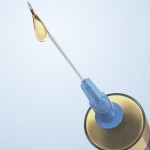
The question is….what is the value of pain reliever that does not take effect until after it is injected? In my practice, I make a big point of making any injection procedure as painless as possible. When it comes to fillers, which are most commonly done in the lips and nasolabial folds, I usually perform an intraoral nerve block which takes away most of the injection pain and is well tolerated by all patients when skillfully done. A filler with a numbing agent would have great value if it prevented the pain of injection. However, this product concept doesn’t start working until after you have injected, a little late from the patient’s standpoint. I think it does have some utility if you inject an area very slowly, taking a break between the injection sites. This gives the local anesthetic time to take effect. I have tried this product a few times in lips which I have not previously numbed up. I must admit it was more tolerable with this ‘slow’ technique than any other lip filler that I have used.
I like the concept of a numbing injectable filler but I still will not rely on its anesthetic effect exclusively. It is the needle stick that makes up at least half of the pain of injection and this still requires an external anesthetic method to have the most pain-free experience.
Dr. Barry Eppley
Indianapolis, Indiana


